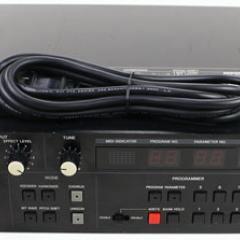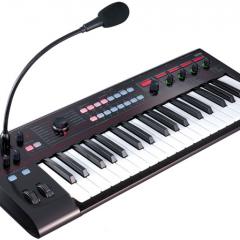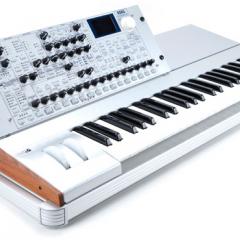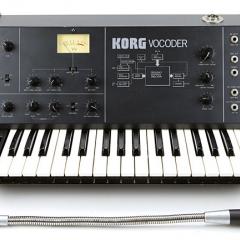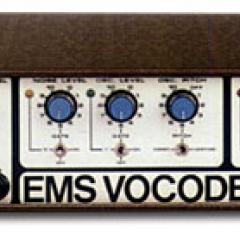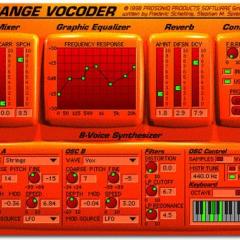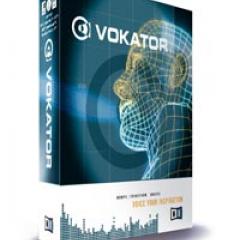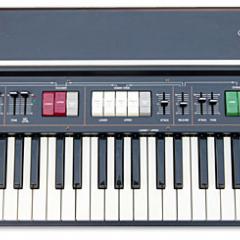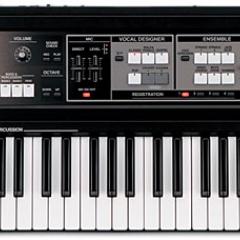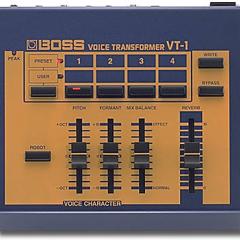Roland VP-770
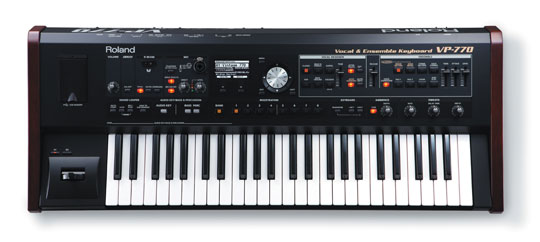
Continuing the trend of launching "remakes" of their own vintage instruments, Roland released the VP-550 in 2006, and three years later the VP-770, to keep the spirit of its 30 year-old predecessor, the legendary VP-330 Vocoder keyboard alive and well.
The original VP-330 can be considered a "sing and play" vocoder, where the user doesn't need to have a deep knowledge of vocoders or synthesis. The strategy was very simple: Build a well tempered vocoder with very few options to adjust, add a good ensemble section to be used as the carrier and boost the dynamic between the mic input and formant section and it's instant "Mr. Roboto". The VP-770 is built with the same concept. It has a vocoder section called the Vocal Designer, an independent Ensemble section and some other useful features, enclosed in an elegant design with vintage-era inspired wooden side panels.
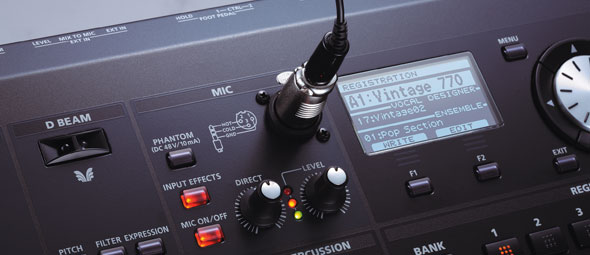
The main feature of this instrument is the Vocal Designer. The VP-770 is built around a vocoder which has no directly user modifiable parameters. Instead, the VP-770 analyses incoming vocal audio to create harmonies, vocal textures and vocoder effects. The user simply selects a Vocal Design: Classic, Male & Female, Gospel, Pop, Background or Vocoder. Of course this instrument would be much more attractive if it offered the ability to really tweak and experiment with the vocoding parameters found in other vocoding instruments. Nevertheless, in combination with the selected carrier sounds, the choral-based designs are really impressive.
The Vocal Designer offers 27 programs divided among the aforementioned designs. Eleven of those programs are dedicated to the Vocoder design, classified into 4 groups: Modern (which are monophonic for typical talk-box effects), Vocoder, Vintage, and WahVox.
The sources for the Formant (analysis section) can be switched between the external mic input, USB Flash Memory, the Ensemble section or the Sound Looper Function. For the external mic input, a dedicated Effects section offers a noise supressor, a parametric equalizer and a compressor, all of which are essential features to help contour incoming audio.
Another big feature of the Vocal Designer is Auto Harmony, which can be used to add backing vocals to your vocal, for example. It offers the harmonizer features Duet, Trio (upper and lower), Quartet, Manhattan and Jazz-Open. Not sure about your own vocal skills? Pressing the the Auto Note button will correct the pitch of the incoming audio to the nearest note in either a chromatic or key-assignable diatonic mode, similar to the well known Auto-Tune. Watch keyboardist Don Lewis use the Auto Harmony feature.
The edit menu for the Vocal Designer offers access to settings for the carrier signal like Level, Pan, Tune, Octave, Tone, Attack, Release, Bend, etc. For direct sound manipulation, Tone and Release sliders are all that is available in this section.
The Ensemble section offers the second timbrality of the VP-770 and can be thought of as a separate synth module containing typical keyboard sounds with some variation capabilities via the Tone and Attack sliders and the usual rompler settings accesible through the Edit menu for this section. The Ensemble section is divided into several categories: Strings, (SuperNatural) Brass, Guitar, Others, Pad, Synth Strings, Choir and Jazz Scat. A Voice Expression switch allows the external input to modulate the level of the ensemble. Watch keyboardist Jordan Rudess use this feature (and the SuperNatural Brass patch).
The Bass and Percussion section is the third timbrality of the VP-770 and offers nine typical bass sounds in the categories: Voice, Reso, Compu, Analog and Spike. The percussion contains only one vocal percussion set. If this section is active, the keyboard is split with the bass or perc mapped to the lower register. Standard drum sounds/sets are not implemented.
The Sound Looper Function is a phrase-loop sequencer that allows the incremental audio recording (and playback) of any sound coming out of the VP-770 to create a fast accompaniment pattern. The record duration is 18 seconds and offers basic settings like Beat, Tempo, Length, Auto-Trigger and Metronome.
The only on-board effect is Ambience which offers two types of hall and one studio reverb, with a dedicated knob to adjust the depth. There is also a Vibrato effect with three dedicated knobs to adjust the Rate, Delay Time and Depth. The VP-770 offers Roland's D-Beam controller which can be assigned to modulate the Pitch, Filter or Expression. Two buttons (S1 and S2) located near the Pitch Bend can be assigned to activate different functions such as Pizzicato and Tremolo for the String section, or Staccato and Fall for the Brass section.
The included Audio Key Utility (PC software) allows you to load WAV, AIFF and MP3 audio files via USB Flash Memory, assign them to the lower octave keys and define their play mode (one shot, loop, immediate or wait). You can also backup presets, Sound Looper phrases and system data to USB Flash Memory.
Musicians without prior vocoder experience will find immediate results with the VP-770. Most impressive are its choral sounds, opening new possibilities to players who would like to have more than their own solo voice for a vocal part. However, like most of Roland's re-launched and resurrected model lines, the VP-770 is no replacement for the original. It has a very modern and digital sound that may be perfect for some users and styles of music, just as the original VP-330's unique sound and analog character may be preferred for certain styles and users as well. The VP-770 is a highly polished and well conceived Vocal Processing instrument designed to give keyboardists a lot of voice with little fuss, and in that way it does carry the VP-series spirit.
Demos & Media
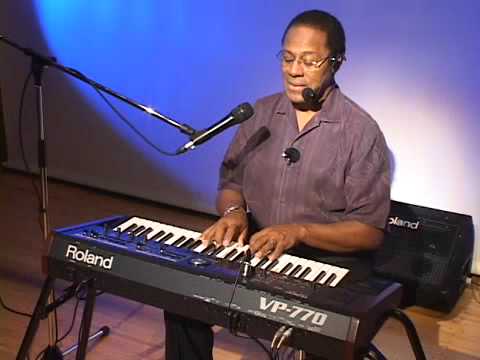
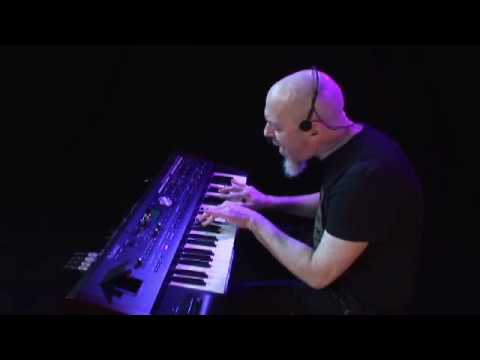
Specifications
ENSEMBLE: Strings, Supernatural Brass, Guitar, Others, Pad, Synth Strings, Choir, Jazz Scat
BASS & PERCUSSION: Bass, Perc
